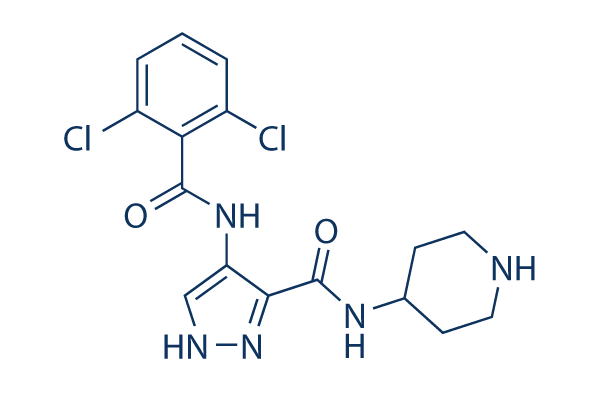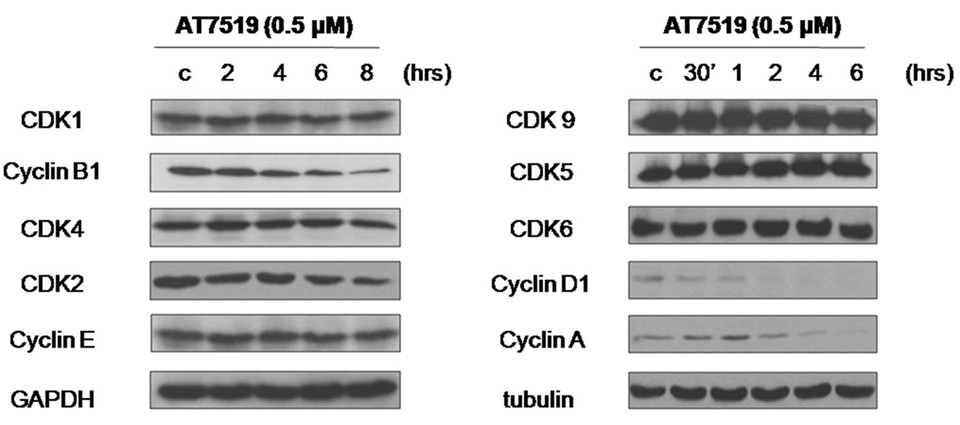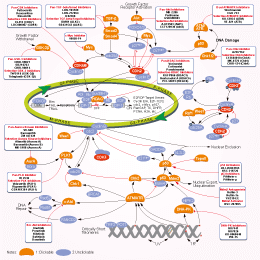
- 阻害剤
- 研究分野別
- PI3K/Akt/mTOR
- Epigenetics
- Methylation
- Immunology & Inflammation
- Protein Tyrosine Kinase
- Angiogenesis
- Apoptosis
- Autophagy
- ER stress & UPR
- JAK/STAT
- MAPK
- Cytoskeletal Signaling
- Cell Cycle
- TGF-beta/Smad
- 化合物ライブラリー
- Popular Compound Libraries
- Customize Library
- Clinical and FDA-approved Related
- Bioactive Compound Libraries
- Inhibitor Related
- Natural Product Related
- Metabolism Related
- Cell Death Related
- By Signaling Pathway
- By Disease
- Anti-infection and Antiviral Related
- Neuronal and Immunology Related
- Fragment and Covalent Related
- FDA-approved Drug Library
- FDA-approved & Passed Phase I Drug Library
- Preclinical/Clinical Compound Library
- Bioactive Compound Library-I
- Bioactive Compound Library-II
- Kinase Inhibitor Library
- Express-Pick Library
- Natural Product Library
- Human Endogenous Metabolite Compound Library
- Alkaloid Compound LibraryNew
- Angiogenesis Related compound Library
- Anti-Aging Compound Library
- Anti-alzheimer Disease Compound Library
- Antibiotics compound Library
- Anti-cancer Compound Library
- Anti-cancer Compound Library-Ⅱ
- Anti-cancer Metabolism Compound Library
- Anti-Cardiovascular Disease Compound Library
- Anti-diabetic Compound Library
- Anti-infection Compound Library
- Antioxidant Compound Library
- Anti-parasitic Compound Library
- Antiviral Compound Library
- Apoptosis Compound Library
- Autophagy Compound Library
- Calcium Channel Blocker LibraryNew
- Cambridge Cancer Compound Library
- Carbohydrate Metabolism Compound LibraryNew
- Cell Cycle compound library
- CNS-Penetrant Compound Library
- Covalent Inhibitor Library
- Cytokine Inhibitor LibraryNew
- Cytoskeletal Signaling Pathway Compound Library
- DNA Damage/DNA Repair compound Library
- Drug-like Compound Library
- Endoplasmic Reticulum Stress Compound Library
- Epigenetics Compound Library
- Exosome Secretion Related Compound LibraryNew
- FDA-approved Anticancer Drug LibraryNew
- Ferroptosis Compound Library
- Flavonoid Compound Library
- Fragment Library
- Glutamine Metabolism Compound Library
- Glycolysis Compound Library
- GPCR Compound Library
- Gut Microbial Metabolite Library
- HIF-1 Signaling Pathway Compound Library
- Highly Selective Inhibitor Library
- Histone modification compound library
- HTS Library for Drug Discovery
- Human Hormone Related Compound LibraryNew
- Human Transcription Factor Compound LibraryNew
- Immunology/Inflammation Compound Library
- Inhibitor Library
- Ion Channel Ligand Library
- JAK/STAT compound library
- Lipid Metabolism Compound LibraryNew
- Macrocyclic Compound Library
- MAPK Inhibitor Library
- Medicine Food Homology Compound Library
- Metabolism Compound Library
- Methylation Compound Library
- Mouse Metabolite Compound LibraryNew
- Natural Organic Compound Library
- Neuronal Signaling Compound Library
- NF-κB Signaling Compound Library
- Nucleoside Analogue Library
- Obesity Compound Library
- Oxidative Stress Compound LibraryNew
- Phenotypic Screening Library
- PI3K/Akt Inhibitor Library
- Protease Inhibitor Library
- Protein-protein Interaction Inhibitor Library
- Pyroptosis Compound Library
- Small Molecule Immuno-Oncology Compound Library
- Mitochondria-Targeted Compound LibraryNew
- Stem Cell Differentiation Compound LibraryNew
- Stem Cell Signaling Compound Library
- Natural Phenol Compound LibraryNew
- Natural Terpenoid Compound LibraryNew
- TGF-beta/Smad compound library
- Traditional Chinese Medicine Library
- Tyrosine Kinase Inhibitor Library
- Ubiquitination Compound Library
-
Cherry Picking
You can personalize your library with chemicals from within Selleck's inventory. Build the right library for your research endeavors by choosing from compounds in all of our available libraries.
Please contact us at info@selleck.co.jp to customize your library.
You could select:
- 抗体
- 新製品
- お問い合わせ
AT7519
別名:AT7519M
AT7519 is a multi-CDK inhibitor for CDK1, 2, 4, 6 and 9 with IC50 of 10-210 nM. It is less potent to CDK3 and little active to CDK7. AT7519 also decrease GSK3β phosphorylation. AT7519 induces apoptosis. Phase 2.

CAS No. 844442-38-2
文献中Selleckの製品使用例(54)
製品安全説明書
現在のバッチを見る:
S152402
DMSO]
25 mg/mL]
false]
Water]
Insoluble]
false]
Ethanol]
Insoluble]
false
純度:
99.9%
99.9
AT7519関連製品
シグナル伝達経路
CDK阻害剤の選択性比較
Cell Data
| Cell Lines | Assay Type | Concentration | Incubation Time | 活性情報 | PMID |
|---|---|---|---|---|---|
| A2780 | Antiproliferative assay | 72 hrs | Antiproliferative activity against human A2780 cells assessed as cell viability after 72 hrs by alamar blue assay, IC50=0.35μM | 18656911 | |
| HCT116 | Antiproliferative assay | 72 hrs | Antiproliferative activity against human HCT116 cells assessed as cell viability after 72 hrs by alamar blue assay, IC50=0.082μM | 18656911 | |
| MRC5 | Antiproliferative assay | 72 hrs | Antiproliferative activity against human MRC5 cells assessed as cell viability after 72 hrs by alamar blue assay, IC50=0.98μM | 18656911 | |
| HCT116 | Cytotoxicity assay | 72 hrs | Cytotoxicity against human HCT116 cells assessed as growth inhibition after 72 hrs by Alamar blue assay, IC50=0.08μM | 26115571 | |
| MIAPaCa2 | Antiproliferative assay | 72 hrs | Antiproliferative activity against human MIAPaCa2 cells after 72 hrs by prestoblue assay, IC50=0.411μM | 30343954 | |
| AsPC1 | Antiproliferative assay | 72 hrs | Antiproliferative activity against human AsPC1 cells after 72 hrs by prestoblue assay, IC50=0.533μM | 30343954 | |
| SUIT2 | Antiproliferative assay | 72 hrs | Antiproliferative activity against human SUIT2 cells after 72 hrs by prestoblue assay, IC50=0.557μM | 30343954 | |
| BxPC3 | Antiproliferative assay | 72 hrs | Antiproliferative activity against human BxPC3 cells after 72 hrs by prestoblue assay, IC50=0.64μM | 30343954 | |
| S2-013 | Antiproliferative assay | 72 hrs | Antiproliferative activity against human S2-013 cells after 72 hrs by prestoblue assay, IC50=2.77μM | 30343954 | |
| Sf21 | Function assay | 2 hrs | Inhibition of recombinant full-length human C-terminal His6-tagged CDK1/human full-length N-terminal GST-tagged Cyclin B expressed in baculovirus infected Sf21 insect cells using histone H1 as substrate measured after 2 hrs in presence of gamma[32P] ATP b, IC50=0.21μM | 30543440 | |
| HCT116 | Antiproliferative assay | 72 hrs | Antiproliferative activity against human HCT116 cells assessed as reduction in cell viability after 72 hrs by cell titer glo-based luminescence assay, IC50=0.132μM | 31175010 | |
| HCT116 | Function assay | Inhibition of CDK1 in human HCT116 cells assessed as PP1-alpha(Thr320) phosphorylation | 18656911 | ||
| HCT116 | Function assay | Inhibition of CDK2 in human HCT116 cells assessed as Rb(Thr321) phosphorylation | 18656911 | ||
| HCT116 | Function assay | Inhibition of CDK2 in human HCT116 cells assessed as NPM(Thr199) phosphorylation | 18656911 | ||
| Sf21 | Function assay | Inhibition of recombinant human full length N-terminal His6-tagged CDK5/N-terminal GST-tagged p25 expressed in baculovirus infected Sf21 insect cells using histone H1 as substrate, Ki=0.018μM | 27171036 | ||
| Sf21 | Function assay | Inhibition of human full length C-terminal His6-tagged CDK2/N-terminal GST-tagged cyclin A expressed in baculovirus infected Sf21 insect cells using histone H1 as substrate, Ki=0.044μM | 27171036 | ||
| sf cells | Function assay | Inhibition of recombinant human N-terminal GST-tagged CDK4/cyclin D1 expressed in baculovirus infected sf cells, Ki=0.067μM | 27171036 | ||
| Sf21 | Function assay | Inhibition of recombinant human full length C-terminal His6-tagged CDK9/cyclin T1 expressed in baculovirus infected Sf21 insect cells using PDKtide as substrate, Ki<0.1μM | 27171036 | ||
| Sf21 | Function assay | Inhibition of human full length C-terminal His6-tagged CDK1/N-terminal GST-tagged cyclin B expressed in baculovirus infected Sf21 insect cells using histone H1 as substrate, Ki=0.19μM | 27171036 | ||
| Sf21 | Function assay | Inhibition of recombinant human full length C-terminal His6-tagged CDK2/N-terminal GST-tagged cyclin E expressed in baculovirus infected Sf21 insect cells using histone H1 as substrate, Ki=0.51μM | 27171036 | ||
| Sf21 | Function assay | Inhibition of recombinant human full length C-terminal His6-tagged CDK7/cyclin H/N-terminal GST-tagged MAT1 expressed in baculovirus infected Sf21 insect cells using cdk7 substrate peptide, Ki=2.8μM | 27171036 | ||
| TC32 | qHTS assay | qHTS of pediatric cancer cell lines to identify multiple opportunities for drug repurposing: Primary screen for TC32 cells | 29435139 | ||
| DAOY | qHTS assay | qHTS of pediatric cancer cell lines to identify multiple opportunities for drug repurposing: Primary screen for DAOY cells | 29435139 | ||
| SJ-GBM2 | qHTS assay | qHTS of pediatric cancer cell lines to identify multiple opportunities for drug repurposing: Primary screen for SJ-GBM2 cells | 29435139 | ||
| A673 | qHTS assay | qHTS of pediatric cancer cell lines to identify multiple opportunities for drug repurposing: Primary screen for A673 cells | 29435139 | ||
| SK-N-MC | qHTS assay | qHTS of pediatric cancer cell lines to identify multiple opportunities for drug repurposing: Primary screen for SK-N-MC cells | 29435139 | ||
| BT-37 | qHTS assay | qHTS of pediatric cancer cell lines to identify multiple opportunities for drug repurposing: Primary screen for BT-37 cells | 29435139 | ||
| NB-EBc1 | qHTS assay | qHTS of pediatric cancer cell lines to identify multiple opportunities for drug repurposing: Primary screen for NB-EBc1 cells | 29435139 | ||
| Saos-2 | qHTS assay | qHTS of pediatric cancer cell lines to identify multiple opportunities for drug repurposing: Primary screen for Saos-2 cells | 29435139 | ||
| SK-N-SH | qHTS assay | qHTS of pediatric cancer cell lines to identify multiple opportunities for drug repurposing: Primary screen for SK-N-SH cells | 29435139 | ||
| BT-12 | qHTS assay | qHTS of pediatric cancer cell lines to identify multiple opportunities for drug repurposing: Primary screen for BT-12 cells | 29435139 | ||
| OHS-50 | qHTS assay | qHTS of pediatric cancer cell lines to identify multiple opportunities for drug repurposing: Primary screen for OHS-50 cells | 29435139 | ||
| RD | qHTS assay | qHTS of pediatric cancer cell lines to identify multiple opportunities for drug repurposing: Primary screen for RD cells | 29435139 | ||
| MG 63 (6-TG R) | qHTS assay | qHTS of pediatric cancer cell lines to identify multiple opportunities for drug repurposing: Primary screen for MG 63 (6-TG R) cells | 29435139 | ||
| Rh41 | qHTS assay | qHTS of pediatric cancer cell lines to identify multiple opportunities for drug repurposing: Primary screen for Rh41 cells | 29435139 | ||
| A673 | qHTS assay | qHTS of pediatric cancer cell lines to identify multiple opportunities for drug repurposing: Confirmatory screen for A673 cells) | 29435139 | ||
| SK-N-MC | qHTS assay | qHTS of pediatric cancer cell lines to identify multiple opportunities for drug repurposing: Confirmatory screen for SK-N-MC cells | 29435139 | ||
| BT-12 | qHTS assay | qHTS of pediatric cancer cell lines to identify multiple opportunities for drug repurposing: Confirmatory screen for BT-12 cells | 29435139 | ||
| DAOY | qHTS assay | qHTS of pediatric cancer cell lines to identify multiple opportunities for drug repurposing: Confirmatory screen for DAOY cells | 29435139 | ||
| SJ-GBM2 | qHTS assay | qHTS of pediatric cancer cell lines to identify multiple opportunities for drug repurposing: Confirmatory screen for SJ-GBM2 cells | 29435139 | ||
| BT-37 | qHTS assay | qHTS of pediatric cancer cell lines to identify multiple opportunities for drug repurposing: Confirmatory screen for BT-37 cells | 29435139 | ||
| TC32 | qHTS assay | qHTS of pediatric cancer cell lines to identify multiple opportunities for drug repurposing: Confirmatory screen for TC32 cells | 29435139 | ||
| U-2 OS | qHTS assay | qHTS of pediatric cancer cell lines to identify multiple opportunities for drug repurposing: Confirmatory screen for U-2 OS cells | 29435139 | ||
| Rh41 | qHTS assay | qHTS of pediatric cancer cell lines to identify multiple opportunities for drug repurposing: Confirmatory screen for Rh41 cells | 29435139 | ||
| RD | qHTS assay | qHTS of pediatric cancer cell lines to identify multiple opportunities for drug repurposing: Confirmatory screen for RD cells | 29435139 | ||
| Rh30 | qHTS assay | qHTS of pediatric cancer cell lines to identify multiple opportunities for drug repurposing: Confirmatory screen for Rh30 cells | 29435139 | ||
| Saos-2 | qHTS assay | qHTS of pediatric cancer cell lines to identify multiple opportunities for drug repurposing: Confirmatory screen for Saos-2 cells | 29435139 | ||
| OHS-50 | qHTS assay | qHTS of pediatric cancer cell lines to identify multiple opportunities for drug repurposing: Confirmatory screen for OHS-50 cells | 29435139 | ||
| SK-N-SH | qHTS assay | qHTS of pediatric cancer cell lines to identify multiple opportunities for drug repurposing: Confirmatory screen for SK-N-SH cells | 29435139 | ||
| HEI-OC1 | Function assay | Protection against cisplatin-induced cell death in neonatal mouse HEI-OC1 cells assessed as reduction in caspase-3/7 activity, EC50=0.38μM | 30091915 | ||
| Sf21 | Function assay | Inhibition of recombinant human full-length C-terminal His6-tagged CDK9/human full-length untagged cyclin T1 expressed in baculovirus infected Sf21 insect cells using PDKtide as substrate, IC50<0.01μM | 30543440 | ||
| Sf21 | Function assay | Inhibition of recombinant human full-length C-terminal His6-tagged CDK3/full-length human N-terminal GST-tagged Cyclin E expressed in baculovirus infected Sf21 insect cells using histone H1 as substrate, IC50=0.36μM | 30543440 | ||
| Sf21 | Function assay | Inhibition of recombinant human C-terminal His6-tagged full length CDK7/untagged recombinant full length human Cyclin H/N-terminal GST-tagged recombinant full length human MAT1 expressed in baculovirus infected Sf21 insect cells using cdk7 peptide as subs, IC50=2.4μM | 30543440 | ||
| 他の多くの細胞株試験データをご覧になる場合はこちらをクリックして下さい | |||||
生物活性
| 製品説明 | AT7519 is a multi-CDK inhibitor for CDK1, 2, 4, 6 and 9 with IC50 of 10-210 nM. It is less potent to CDK3 and little active to CDK7. AT7519 also decrease GSK3β phosphorylation. AT7519 induces apoptosis. Phase 2. | |||||||||||
|---|---|---|---|---|---|---|---|---|---|---|---|---|
| Targets |
|
| In Vitro | ||||
| In vitro | AT7519 is an ATP competitive CDK inhibitor with a Ki value of 38 nM for CDK1. This compound is inactive against all non-CDK kinases with the exception of GSK3β (IC50 = 89 nM). It shows potent antiproliferative activity in a variety of human tumor cell lines with IC50 values ranging from 40 nM for MCF-7 to 940 nM for SW620 consistent with the inhibition of CDK1 and CDK2. [1] This chemical induces dose-dependent cytotoxicity in multiple myeloma (MM) cell lines with IC50 values ranging from 0.5 to 2 μM at 48 hours, with the most sensitive cell lines being MM.1S (0.5 μM) and U266 (0.5 μM) and the most resistant MM.1R (>2 μM). It does not induce cytotoxicity in peripheral blood mononuclear cells (PBMNC). This inhibitor partially overcomes the proliferative advantage conferred by IL6 and IGF-1 as well as the protective effect of bone marrow stromal cells (BMSCs). It induces rapid dephosphorylation of RNA pol II CTD at serine 2 and serine 5 sites, and leads to the inhibition of transcription, partially contributing to its induced cytotoxicity of MM cells. This agent induces activation of GSK-3β by down-regulating GSK-3β phosphorylation, which also contributes to its induced apoptosis independent of the inhibition of transcription. [2] | |||
|---|---|---|---|---|
| Kinase Assay | In vitro Kinase Assays | |||
| [API调用失败: invalid chat.event: ping, {'event': 'ping', 'data': '{"timestamp_ms":"1763712465092"}'}] | ||||
| 細胞実験 | 細胞株 | MM.1S, MM.1R, RPMI8226, U266, RPMI8266, RPMI-Dox40, OPM1 cells, primary MM cells and PBMNCs | ||
| 濃度 | Dissolved in DMSO at a concentration of 10 mM, final concentrations 0.25-4 μM | |||
| 反応時間 | 24 or 48 hours | |||
| 実験の流れ | Cells are incubated with different concentrations of AT7519 for 24 or 48 hours at 37 °C. Cell viability is assessed by measuring 3-(4,5-dimethylthiazol-2-yl)-2,5 diphenyl tetrasodium bromide (MTT) dye absorbance. DNA synthesis is measured by tritiated thymidine uptake (3H-TdR). Apoptosis is assessed by using Annexin V/PI staining. The percentage of cells undergoing apoptosis is defined as the sum of early apoptosis (Annexin V-positive cells) and late apoptosis (Annexin V-positive and PI-positive cells). | |||
| 実験結果図 | Methods | Biomarkers | 結果図 | PMID |
| Growth inhibition assay | Cell viability |

|
20101221 | |
| Western blot | CDK1 / CDK2 / CDK4 / Cyclin B1 / Cyclin E / CDK9 / CDK5 / CDK6 / Cyclin D1 / Cyclin A |

|
20101221 | |
| In Vivo | ||
| In Vivo | A twice daily dosing of AT7519 (9.1 mg/kg) causes tumor regression of both early-stage and advanced-stage s.c. tumors in the HCT116 and HT29 colon cancer xenograft models. [1] This compound treatment (15 mg/kg) inhibits tumor growth and prolongs the median overall survival of mice in the human MM xenograft mouse model in association with increased caspase 3 activation. [2] | |
|---|---|---|
| 動物実験 | 動物モデル | Male SCID mice inoculated subcutaneously with MM.1S cells |
| 投与量 | 15 mg/kg/day | |
| 投与経路 | Dosed i.p. | |
| NCT Number | Recruitment | Conditions | Sponsor/Collaborators | Start Date | Phases |
|---|---|---|---|---|---|
| NCT01183949 | Completed | Multiple Myeloma |
Astex Pharmaceuticals Inc.|Multiple Myeloma Research Consortium |
November 2010 | Phase 1|Phase 2 |
|
化学情報
| 分子量 | 382.24 | 化学式 | C16H17Cl2N5O2 |
| CAS No. | 844442-38-2 | SDF | Download AT7519 SDFをダウンロードする |
| Smiles | C1CNCCC1NC(=O)C2=C(C=NN2)NC(=O)C3=C(C=CC=C3Cl)Cl | ||
| 保管 | |||
|
In vitro |
DMSO : 25 mg/mL ( (65.4 mM); 吸湿したDMSOは溶解度を減少させます。新しいDMSOをご使用ください。) Water : Insoluble Ethanol : Insoluble |
モル濃度計算器 |
|
in vivo Add solvents to the product individually and in order. |
投与溶液組成計算機 | |||||
実験計算
投与溶液組成計算機(クリア溶液)
ステップ1:実験データを入力してください。(実験操作によるロスを考慮し、動物数を1匹分多くして計算・調製することを推奨します)
mg/kg
g
μL
匹
ステップ2:投与溶媒の組成を入力してください。(ロット毎に適した溶解組成が異なる場合があります。詳細については弊社までお問い合わせください)
% DMSO
%
% Tween 80
% ddH2O
%DMSO
%
計算結果:
投与溶媒濃度: mg/ml;
DMSOストック溶液調製方法: mg 試薬を μL DMSOに溶解する(濃度 mg/mL, 注:濃度が当該ロットのDMSO溶解度を超える場合はご連絡ください。 )
投与溶媒調製方法:Take μL DMSOストック溶液に μL PEG300,を加え、完全溶解後μL Tween 80,を加えて完全溶解させた後 μL ddH2O,を加え完全に溶解させます。
投与溶媒調製方法:μL DMSOストック溶液に μL Corn oil,を加え、完全溶解。
注意:1.ストック溶液に沈殿、混濁などがないことをご確認ください;
2.順番通りに溶剤を加えてください。次のステップに進む前に溶液に沈殿、混濁などがないことを確認してから加えてください。ボルテックス、ソニケーション、水浴加熱など物理的な方法で溶解を早めることは可能です。
技術サポート
ストックの作り方、阻害剤の保管方法、細胞実験や動物実験の際に注意すべき点など、製品を取扱う時に問い合わせが多かった質問に対しては取扱説明書でお答えしています。
他に質問がある場合は、お気軽にお問い合わせください。
* 必須

